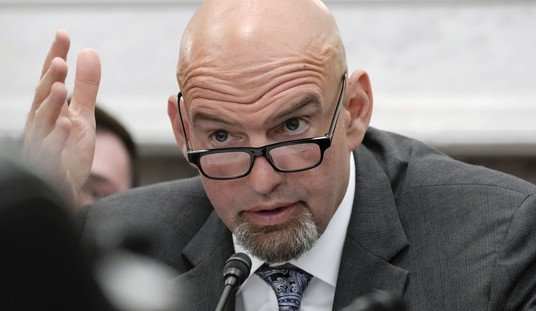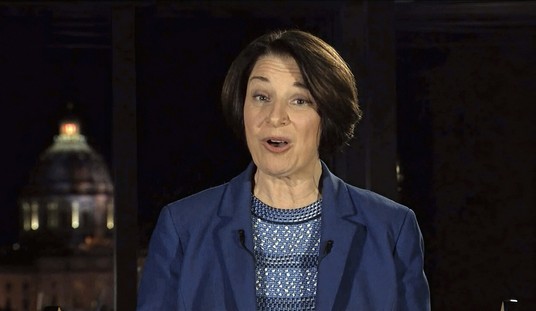The health care website faced its first big test Monday since the Obama administration said it met its deadline to make HealthCare.gov work smoothly for the vast majority of shoppers. Trouble since the site’s debut in October has cut into enrollments.
CBS News learned that about 100,000 signed up online in November for a total of more than 206,000 so far, but that’s 1 million short of the projected enrollment…
[D]espite promises the website could handle 50,000 users at the same time, the queuing system was turned on Monday at approximately 35,000 users. Officials said they had to “maximize the smooth user experience” for those who applied first.
The White House on Monday reported a “surge” in interest to HealthCare.gov, with spokesman Jay Carney saying the site had 375,000 visits by noon.
Carney’s comments come after ObamaCare officials on Sunday announced that “dramatic progress” had been made, allowing a vast majority of users to enroll in health plans through HealthCare.gov…
Carney said that a “majority” of necessary fixes had been made to the electronic forms that transmit consumer information from the federal government to insurers. He added that the administration was in “daily” contact with the insurance companies to iron out additional glitches.
“We expect the info now sent to insurers to be vastly improved,” he said.
Three reporters — one from the Los Angeles Times, one from The Wall Street Journal and I — asked Bataille for information on how many of the 834s sent out so far have had an error. This is a question that I’ve asked on three previous calls, a point made by the Los Angeles Times’s Noam Levey as he asked for his second time.
This is where Monday’s media call started to get more tense than the dozens that have happened in the past, with reporter after reporter asking about the numbers of 834 errors and not getting a response from the administration. As The Wall Street Journal reporter reasoned, if the administration knows that 80 percent of the errors are coming from a certain bug — then simple math should figure out the total number.
Bataille did not provide an answer, beyond the metric of the Social Security bug causing the majority of the errors. “That’s the information I’ve got today,” she told The Wall Street Journal’s Louise Radnofsky, when she was the third reporter to ask about the issue.
The administration has identified the 834 transmissions as key to the health law’s success. When Jeff Zients came onboard to help fix HealthCare.gov, he identified fixing these flawed transmissions as the issue at the very top of of his punch list. The reason I’ve kept asking about it is because experts tell me repeatedly that if the health law wants to have a shot at working, then the 834 transmissions need to work, too.
But reached by email after the conference call, AHIP spokesman Robert Zirkelback told the Washington Examiner: “Health plans continue to experience significant problems with the ‘834’ enrollment files.”
During the CMS call, Bataille would not disclose the error rates on the 834 transactions, despite several attempts from several different reporters.
On an Oct. 24 conference call, Bataille claimed that the errors were “isolated” and then a day later Jeff Zients, who was brought in to oversee fixes to the troubled Obamacare website, said the errors were actually on top of CMS’s list of fixes.
A recent Gallup survey revealed that familiarity with the Affordable Care Act has recently spiked, with the majority of Americans – including virtually all subgroups and demographics – expressing some familiarity with the law. The problem for ACA supporters, however, is that opposition to the sweeping 2010 health care reform law has also increased dramatically…
Among the groups who are most familiar with the law are Republicans, 88 percent of whom described themselves as familiar with the ACA, and those making more than $90,000 per year, of which group 90 percent identified themselves as being familiar with the law.
Via Gallup.

Democrats are praying that this weekend’s relaunch of the Obamacare Web site will save them from an electoral bloodbath in 2014. Their hopes are misplaced. Here are five numbers that suggest that public anger over Obamacare will only grow as Election Day 2014 approaches:
5.5 million. That is how many people the administration needs to sign up in just 23 days because Obamacare drove them out of their health-care plans. That’s some 240,000 sign-ups every single day, just to break even. Getting that many enrolled in a few weeks would be extraordinarily difficult even if the Web site were working perfectly, which it isn’t. According to the New York Times, the system is still sending insurers inaccurate or incomplete information, and the companies are being “deluged with phone calls from people who believe they have signed up for a particular health plan, only to find that the company has no record of the enrollment.” As a result, many Americans could find themselves without insurance on Jan. 1. Their anger at those responsible for putting them through this panic and disruption is not likely to subside by November 2014.
50 million. That is how many Americans will be surprised to find their employer-based health plans dropped or substantially changed next year because of Obamacare. Some will see their plans canceled; others will lose their doctors and see premiums or deductibles rise dramatically. If Democrats think the public is mad about 5.5 million cancellations in the individual market today, imagine the outrage when tens of millions lose their plans in October 2014, right before Election Day.
The question now is whether people will enroll even if the website is functioning. The best comparison to Obamacare is the Massachusetts Health Connector, better known as Romneycare, the universal health-care program in Massachusetts enacted when Mitt Romney was the state’s governor. Romneycare was fully rolled out in May 2007, but the requirement for all Massachusetts residents to have insurance didn’t take effect until December 31. The result was a late surge in enrollment in December…
For the reforms of Obamacare to work, the framework of the Affordable Care Act requires mass enrollment. The individual mandate was introduced precisely to reduce the uncertainty over enrollment numbers and use the premiums of otherwise healthy uninsured people to underwrite the cost of banning discrimination based on preexisting conditions. But the website shortcomings didn’t just slow the pace of enrollment, they undermined confidence in the entire program. After all, if the government can’t run simple HTML code, how can it be capable of handling the health-care industry? The test of the website in the coming weeks isn’t just whether it will work but whether its failures have already fatally undermined consumer confidence in Obamacare as a whole.
From the first day of October, there have been two kinds of critics of the poor performance of healthcare.gov: those who were disappointed that the site was so bad, and those who were ecstatic that it didn’t work. With the relaunch this weekend, it looks like the administration has succeeded in doing a lot to address the concerns of universal health care’s enemies, but very little to sooth the concerns of its friends. Essentially they’re delivering a product that’s just usable enough to prevent the underlying program from failing, without doing anything to alter the public’s general perception of government…
Perhaps the most telling part of Sunday’s briefing with the press was when Jeffrey Zients, the administration veteran who’s been tapped to lead the healthcare.gov fixes, bragged that the team is now working with “private sector velocity and effectiveness.” This is probably not entirely true—civil service prevents the kind of swift firing and staffing-up that a private firm in crisis would attempt—but everyone knew exactly what he meant: The government, according to the people who run the government, shouldn’t be expected to do things well.
That’s an enormous lowering of expectations, and a reminder to liberals about the formidable barriers to further expansion of the welfare state. The public has long been skeptical of the political system’s practical ability to do the things progressives say they want to do. A health care website that comes in months late, over budget, and still lacking full functionality confirms all those fears when it was initially meant to debunk them. And that’s true whether or not it in some sense “works.”
Via Mediaite.
Via RCP.








Join the conversation as a VIP Member